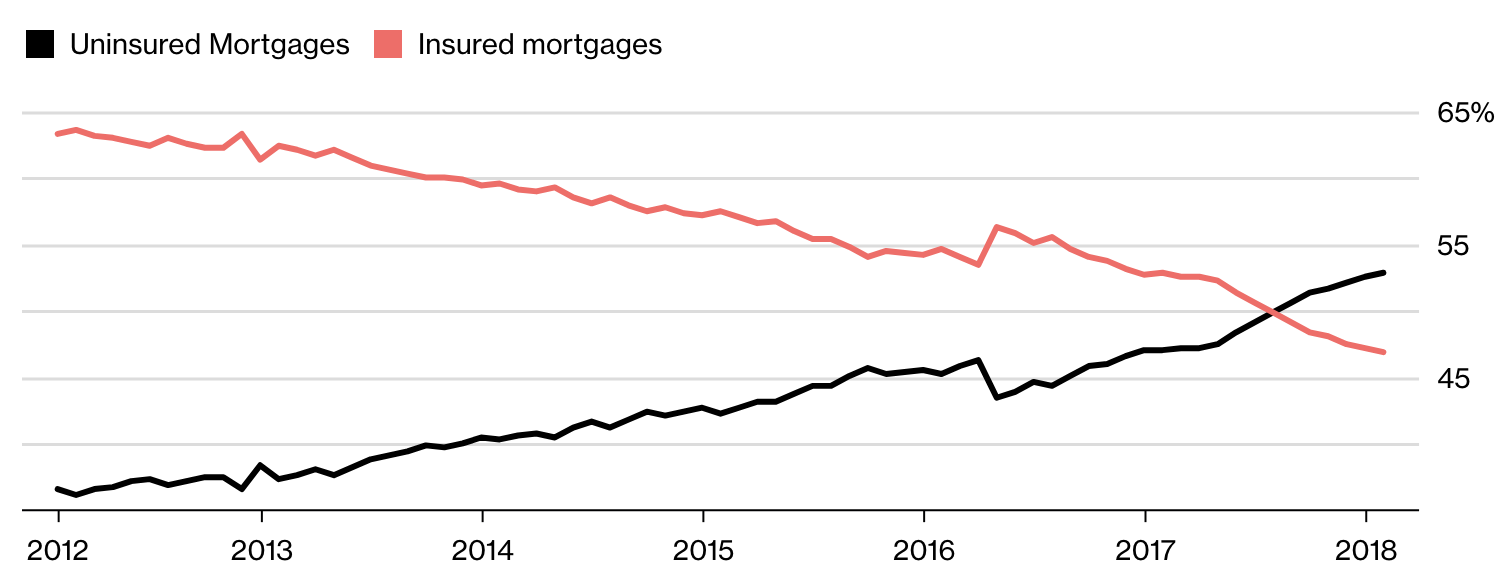Samantha Brookes has been warning Canadians to take a close look at the clauses in their mortgage contracts for years, but her refrain has become a bit more prevalent in recent months.
Since the Office of the Superintendent of Financial Institutions’ mortgage stress test was implemented in January, the founder of the Mortgages of Canada brokerage has seen “a huge influx” of Canadians who fail to qualify for a bank mortgage turning to alternative lenders that range from risky loan sharks to larger, more conventional companies like Home Trust.
While alternative lenders can provide a lifeline for Canadians who have run out of other financing options, Brookes said they come with pitfalls for those who don’t bother looking at the fine print.
“You need to read those contracts,” she said. “(With an alternative lender), the interest rates are higher, the qualifying rate is higher than if you were going with a traditional bank and they are going to charge one per cent of the mortgage amount (as a lender’s fee) for closing, so that means your closing costs increase.”
Alternative lenders tend to offer less wiggle room on their terms, so Brookes said that means you should pay special attention to another dangerous term she’s seen slipped into mortgage contracts: the sale-only clause.
It’s less common, Brookes said, but if left in, it might mean the only way you can break your mortgage is by selling your home. She usually makes sure it’s nixed from her clients contracts immediately.
She also advises mortgage-seekers to research a potential lender’s reputation, which can easily be done online. Looking up some lenders will reveal their involvement in growing strings of court cases, she said.
“If they are constantly in court fighting with consumers for money, are you willing to put yourself at risk with that kind of person?” Brookes recommended asking yourself.
Still, she said alternative lenders “that don’t end up in court every two seconds” are out there and can offer a good mortgage, if you do your research.
Broker Ron Alphonso has seen what happens when you don’t look into your lender. He recently heard from a couple who borrowed $100,000 via a paralegal posing as a broker, who then convinced the couple to give the money back to him so he could invest it on their behalf. Instead of investing it, the paralegal disappeared to Sri Lanka with the funds, leaving the couple on the hook for the money and resulting in eviction from their home.
“They got very, very poor advice,” Alphonso said. “Apparently the person that arranged the mortgage was an agent and paralegal that has since been disbarred. If they had a lawyer working for them, at least the lawyer could have said (before they signed the mortgage) maybe this isn’t right.”
Alphonso recommends seeking advice from a broker, who he said should also be questioned about how tolerant a lender will be if you were to default on one of your payments.
Some lenders quickly force their clients into a power-of-sale or foreclosure, while others will find a way to work out an arrangement that will allow them to keep their home.
“If you are already in some kind of financial problem and you go to a lender that is not flexible, you make the situation worse,” Alphonso said. “If you miss one payment, (within) 15 days you can be in power-of-sale.”
When that happens, he often sees people refuse to leave their home and try to fight the power-of-sale or foreclosure. They take the matter to court and end up spending tens of thousands of dollars in legal fees that can eclipse any remaining equity they might have in their home.
If they lose their case, which Alphonso said happens often, they end up with a massive lawyer’s bill, no equity to cover it and no place to live.
That’s part of why he said those seeking financing should have an exit strategy to get out of any mortgages they sign with an alternative or private lender with a higher interest rate.
“Your goal should always be to get to a lower interest rate,” he said. “If they don’t go in with a true goal of how to get out of this private mortgage, there will be a problem down the road.”
Alphonso recommended looking for an open mortgage, where you can prepay any amount at any time without a compensation charge or a prepayment limit that you would often find in a closed mortgage.
Open mortgages come with higher interest rates, but give buyers the option to switch to a cheaper lender if something happens. However, switching does often come with penalties, he said.
Because some agents and brokers don’t give enough information or fully explain penalties and clauses, he said the best way to keep out of trouble when seeking a mortgage is to ask lots of questions and understand what you’re getting into before signing on the dotted line.


